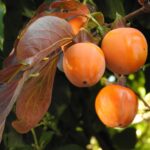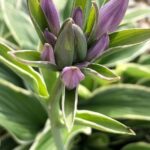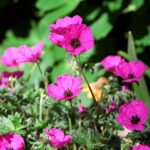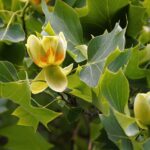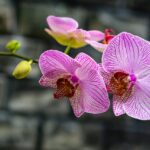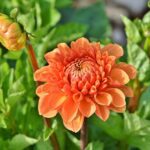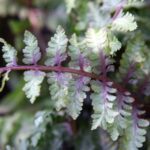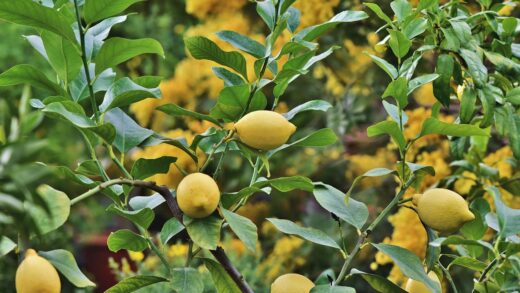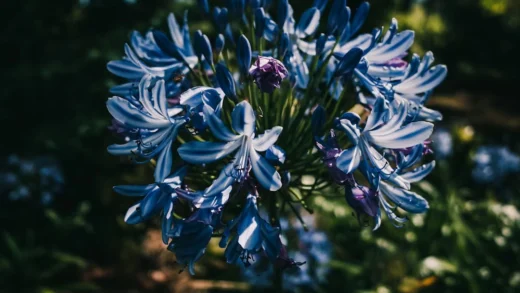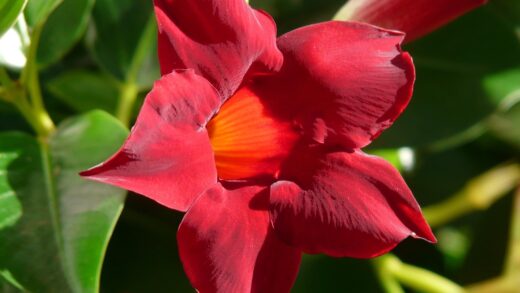The Gerbera, a stunning plant originating from South Africa and boasting magnificent flowers, requires special attention to its water regime, even though it is relatively easy to grow. Without proper irrigation, the plant will not only fail to produce the expected abundant blooms but can also easily fall prey to various diseases or even perish. The key is to ensure balanced moisture, which allows for optimal root system function and healthy plant development. A careful gardener learns to recognize the subtle signs by which the Gerbera indicates thirst or, conversely, excess water, thereby ensuring a long life rich in flowers.
Water plays a fundamental role in the physiological processes of the Gerbera, as it is essential for photosynthesis, during which the plant uses solar energy to produce organic matter. Additionally, water transports nutrients absorbed from the soil to various parts of the plant and ensures cell turgor, or firmness, which is responsible for the plant’s posture and the proper appearance of leaves and flowers. In a water-deficient state, these processes slow down or even stop, leading to wilting, a lack of flowering, and general weakening. Evaporation, or transpiration, is also an important factor in water management, cooling the plant and aiding the flow of water and minerals from the roots to the leaves.
A Gerbera’s water needs are influenced by numerous factors, ranging from environmental conditions such as light intensity, temperature, and air humidity, to the plant’s developmental stage and the characteristics of the growing medium, as well as the pot’s size and material. Both overwatering and underwatering can cause serious problems; the former can lead to root rot and fungal diseases, while the latter can cause the plant to dry out and die. One of the secrets to successfully growing Gerberas, therefore, lies in finding and maintaining this delicate balance.
The goal of optimal irrigation is to keep the growing medium consistently slightly moist but never waterlogged, which would lead to root suffocation. This requires continuous monitoring of the plant’s needs and environmental conditions, and adjusting the frequency and amount of watering accordingly. In the following chapters, we will discuss in detail how to determine a Gerbera’s optimal water needs, which irrigation techniques prove most effective, and how to recognize problems स्वास्थ्य stemming from improper watering.
Determining Optimal Water Needs for Gerberas
The golden rule for watering Gerberas is to keep their soil consistently moist but never soggy. In practice, this means that the top layer of soil can dry out slightly between waterings, but it should still retain noticeable moisture deeper down. Gerberas are particularly sensitive to standing water, which can quickly lead to root problems, so well-draining soil and pots are fundamental. The simplest way to check soil moisture is the finger test: insert your finger about 2-3 centimeters (about an inch) deep into the soil, and if it feels dry, it’s time to water.
More articles on this topic
Environmental factors significantly influence a Gerbera’s water requirements. Higher light intensity and temperatures, especially during summer months, increase transpiration, thus the plant demands more water. Low air humidity, common in heated rooms, also has a drying effect, so in such conditions, it’s advisable to increase the humidity around the plant, for example, with a humidifier or a tray filled with water and pebbles placed beneath the pot. Airflow also plays a role: moderate ventilation is beneficial, but strong drafts can quickly dry out the plant.
The plant’s developmental stage is also crucial. Young, actively growing seedlings, as well as mature, flowering plants developing buds, have higher water needs than plants in their dormant period or those regenerating after flowering. During the flowering period, a continuous but not excessive water supply is particularly important, as water shortage can lead to bud drop or premature wilting of flowers. Observe the plant’s reactions and adjust watering to its current needs.
The type of growing medium and the pot’s size and material also affect watering frequency. A loose, well-draining potting mix will dry out faster than a compact, clay-heavy medium. Soil in smaller pots loses moisture more quickly than in larger containers. Terracotta pots are more porous and allow soil to dry faster than plastic pots. In all cases, it is essential that the pot has drainage holes at the bottom to prevent excess water from accumulating.
Irrigation Techniques and Best Practices
Two main techniques can be used for watering Gerberas: bottom watering and top watering, each with its own pros and cons. Bottom watering involves placing the pot in a saucer or tray filled with water and allowing the plant to absorb the necessary amount through its roots via capillary action. This method is often recommended because it prevents the leaves and crown (the base of the plant) from getting wet, reducing the risk of fungal diseases like crown rot, and encourages deeper root growth. After about 20-30 minutes, any excess water should be poured out from the saucer.
More articles on this topic
When top watering, which is the more traditional method, care should be taken to apply water slowly and evenly around the base of the plant, avoiding the foliage and crown, especially in low-light or humid conditions, to prevent fungal diseases. Water thoroughly until it begins to drain from the bottom of the pot. It’s crucial not to let the pot sit in standing water; therefore, empty the saucer about 15-20 minutes after watering.
Water quality can also affect a Gerbera’s health. Ideally, use rainwater or tap water that has been allowed to sit for at least 24 hours to allow chlorine to dissipate. Very hard water or water with high mineral content can, over time, alter the soil’s pH. The water temperature should be at room temperature, as overly cold water can shock the roots.
The frequency of watering should not be based on a strict schedule but rather on the plant’s needs and environmental conditions. Observation is key. Generally, more frequent watering is needed during warmer, sunnier periods when the plant is actively growing and flowering, while in cooler, less bright winter months, watering frequency and volume should be reduced.
Signs and Consequences of Overwatering and Underwatering
Overwatering is one of the most common mistakes in Gerbera care and can have serious consequences. The most obvious signs of overwatering include yellowing lower leaves, wilting despite moist soil, root rot (indicated by mushy, brown roots and a foul odor), and stunted growth. You might also notice small, dark fungus gnats around the soil surface, as their larvae thrive in moist conditions. Physiologically, overwatering deprives roots of oxygen, leading to their dysfunction and decay.
Chronic overwatering leads to severe and often irreversible root damage, increased susceptibility to diseases, and eventually, plant death. If caught early, an overwatered Gerbera might be saved by immediately stopping watering, ensuring good drainage, and if necessary, repotting it into fresh, well-draining soil after removing any rotted root sections.
Underwatering, or providing insufficient water, also harms the plant. Symptoms include wilting leaves that recover after watering (if the dehydration isn’t too severe), crispy or browning leaf edges, drooping flower stalks, and soil pulling away from the pot’s edges. Growth slows, and flowering may be reduced or cease altogether. The plant is essentially trying to conserve its limited water resources.
Long-term consequences of underwatering include reduced vigor, smaller and fewer flowers, and increased susceptibility to pests like spider mites, as the weakened plant is less able to defend itself. If a Gerbera is severely dehydrated, rehydrate it slowly by allowing the pot to soak in a shallow dish of water for about 30 minutes, so the soil can gradually absorb moisture without overwhelming the stressed roots.
Special Irrigation Considerations for Different Growing Conditions
Gerberas grown indoors as houseplants often face challenges like lower light and humidity compared to their natural habitat. It’s crucial to use pots with excellent drainage and to avoid leaving them in saucers पानी filled with water. Adjust watering based on the indoor climate, especially when heating or air conditioning is in use, as these can significantly affect soil drying rates.
When Gerberas are grown outdoors in containers, they are more exposed to sun and wind, leading to faster drying. They may require daily watering in hot weather. Using sufficiently large containers can help buffer moisture changes. It’s also important to protect them from excessive rainfall, which can lead to waterlogged conditions.
Gerberas grown in garden beds, while less common for hybrid varieties, can thrive in suitable climates with well-prepared soil. Ensuring good soil drainage before planting is key. Mulching can help retain soil moisture and regulate temperature. Water these Gerberas deeply but less frequently to encourage a deep root system.
In commercial greenhouse production, sophisticated irrigation systems such as drip irrigation or ebb-and-flow systems are often used. These allow for precise control over water and nutrient delivery, optimizing plant growth and minimizing waste. Environmental factors are closely monitored to adjust watering schedules for large quantities of plants effectively.
Summary and Practical Tips for Successful Gerbera Irrigation
In summary, the cornerstone of successful Gerbera cultivation is mindful and appropriate watering. The core principles are to maintain consistently moist soil, ensure good drainage, and avoid extremes of both overwatering and underwatering. Remember that observation of your specific plant and its environment is your best guide.
Key takeaway messages include choosing the right soil and pot, watering thoroughly when needed, monitoring for signs of trouble, and adjusting your practices based on the season and the plant’s growth stage. Proper watering is a dynamic process, not a fixed routine.
Mastering Gerbera watering comes with practice and attention. The rewards healthy plants and beautiful, long-lasting blooms are well worth the effort. It is also important to remember that watering interacts closely with other aspects of care, such as light and fertilization, all of which contribute to the plant’s overall health and vigor.



